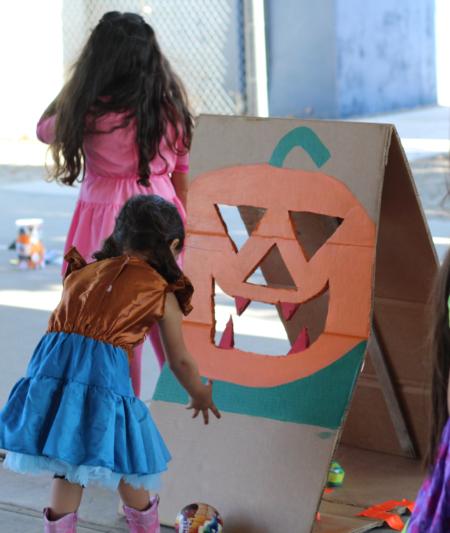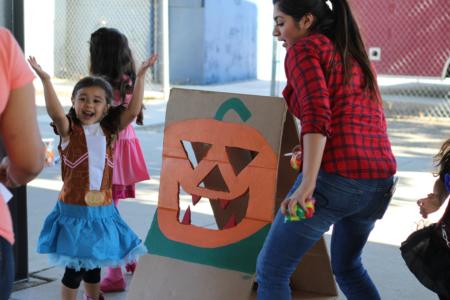Lesson 2.3: Play Together (Part I)
Background: Young children need plenty of opportunities to run, climb, skip, dance, and practice other motor skills. Active play outdoors is very important to help children get enough physical activity. Weather permitting, toddlers and preschoolers should get at least 60 minutes of outdoor active play daily. Total active time (indoor and outdoor) for preschoolers should be at least 90-120 minutes daily.
Children ages 6-17 years need at least 60 minutes of moderate to vigorous physical activity daily. An example of moderate activity is dancing or walking quickly. Running or playing soccer is an example of vigorous activity. Doctors also recommend that children limit time spent watching TV, playing video games, or using computers to two hours or less daily.

Among US children and youth (6-19 years), only one in four meet recommendations. Younger children (6-11 years) are more active than teenagers, so it is important to promote activity as children grow.
Teaching Tips: Have an assistant teach the children all the activities first while the parents participate in the lesson. During the activity part, ask the children to teach the games to their parents. During the opening games, invite parents and children to create a story as they act out the movements. Another station that requires no materials can be a “tag” game, where parents and children can invent new rules to “tag” each other.

Target Audience: Latino families with children, 3-8 years
Key Message: Parents can use simple and fun games to help children be active.
Objectives: By the end of the lesson, participants will be able to:
1) Identify how much physical activity is recommended for children over 2 years and
2) Try simple, fun ways to help children be physically active
Materials: Motor Skills Poster; supplies for activity stations to be set-up before class (paddle and yarn ball; scoop with ball; 3 bean bags and small buckets; radio or CD player and lively music); food and other supplies for food demonstration
Handouts: recipes (suggested Apple Crisp)
Set-up: Set-up 4 stations in advance around the corners of the room. Color a strong paper plate and attach a stick with duct tape to the back. Make a large scoop from a milk carton and attached a small ball with yarn. Hint: you can make a ball from duct tape. Buy or make 3 small beans bags with socks filled with dried beans and tied tightly. Mark on floor with tape a standing spot for tossing bags into the buckets.
Click here to download lesson plan:
English version Lesson 2.3PlayatHome(Part I) Eng
Other Resources
National Resource Center. (2016). Caring for our children
Standard 3.1.3.1 Active opportunities for physical activity
US Department of Agriculture and US Department of Human Health and Services. 2015-2020 Dietary Guidelines for Americans Appendix 1: Physical Activity Guidelines

